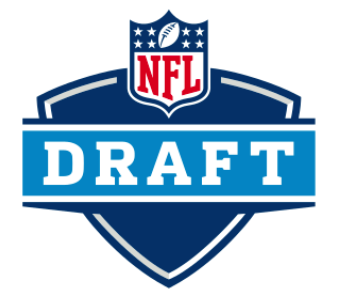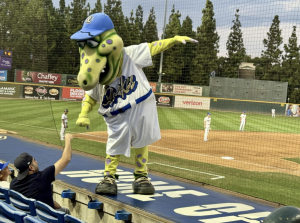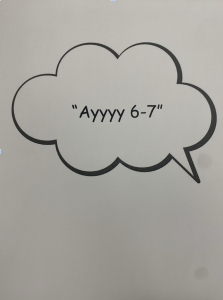NFL Draft: Explained

With the season coming to an end, the NFL draft is on everyone’s mind to what effects it will have on the upcoming season.
January 15, 2021
During the National Football League’s offseason last year, teams and fans suspected that this season would be nothing like before. With COVID-19 affecting everyone’s lives, some wondered if there would be a season at all.
Despite the initial doubt, the NFL pulled through and completed its season without canceling any games throughout the 17 weeks. However, there were a few noticeable differences. Since each state has unique COVID statistics and legal parameters, attendance varied. Many stadiums only allowed a 25% seating capacity at most. Another issue involved player decision due to individual or immediate family health concerns. Finally, the biggest scheduling change consisted of three wild cards spots, allowing one additional team a chance to make the postseason.
With 18 teams done for the year, many are already looking at how the next season will play out. But before the upcoming 2021 season, teams are already anticipating the NFL draft.
The NFL draft is a long, complicated process for all 32 teams. The initial draft began in 1936, sixteen years after the inaugural season of the NFL. It was composed as an attempt to level the NFL playing field, allowing teams with the opportunity to improve their rosters by recruiting college prospects.
According to Pro Football Hall of Fame it states, “The first NFL draft was held at the Ritz-Carlton Hotel in Philadelphia on Feb. 8, 1936. Since that time, there has been a college draft held every year resulting in a competitively balanced league.”
The league will order the teams from worst to best, based off a team’s record from the previous year. This allows for the worst teams to pick from the best players that fit respective needs. The teams that do not qualify for the playoffs are ranked from 1-18 and the teams that do make the playoffs are listed from 19-32. While 1-18 is ordered with the records of the teams, 19-32 is ranked from the prior season’s postseason’s position.
According to the NFL’s Football Operations, “The six teams eliminated in the wild card round pick in slots 19-24 in the reverse order of their final regular season records. The four teams eliminated in the divisional round pick in slots 25-28 in the reverse order of their final regular season records. The two teams that lost in the conference championships pick in the 29th and 30th spots in the reverse order of their final regular season records,”
The 31st slot is given to the loser of the Super Bowl and the allocation of the Super Bowl champion will take the final pick. So while the team wins the Lombardi Trophy, the team also gets the highest spot, costing them the most desirable candidates. In contrast, the worst team can has the finest players to choose from, offering the greatest impact for their team’s needs.
If team records tie at the season’s close, the decision favors the team with the easier schedule in the preceding season. This is determined by the winning percentage of the team’s adversaries. Whichever team has the lowest percentage is placed higher in the draft.
“If that percentage is the same, the next tiebreakers are division and conference records. And if they’re still tied after that, the following is the tiebreaking method: (1) Head-to-head (if applicable), (2) Best won-lost-tied percentage in common games (minimum of four), (3) Strength of victory in all games, (4) Best combined ranking among all teams in points scored and points allowed in all games, (5) Best net points in all games, (6) Best net touchdowns in all games, (7) Coin toss,” said the Sporting News.
Prospects are also ranked in order from highest to lowest. 32 players are drafted in each round, of which there are seven total. Franchises have analysts working year-round to identify the best prospects who might benefit their team.
The college players who hope to enter the draft have to meet the league’s requirements. To be eligible, they must be out of high school for at least three years, meaning that most are juniors or redshirt sophomores. The deadline to declare for the draft is after the National Collegiate Athletic Association Football Championship game, around mid-January – in this year’s case, January 18th.
While few prospects know where they will end up, most have a general idea of how high or low they will be drafted. For instance, Trevor Lawrence, the quarterback of the Clemson Tigers, will likely be the number one overall pick in the 2021 NFL draft. However, there were doubts that Lawrence wouldn’t have declared for the draft if the New York Jets had the first pick. The worst team in the league back in Week 13, numerous analysts believed the Jets would have the first spot in the draft. With one of the worst coaching staff in the league, Lawrence could have declared for the draft and risked being drafted by the Jets, or he could have chosen to continue his college career at Clemson University with hopes for a better opportunity in 2022.
Fortunately, the Jets won two additional games, placing them second in the draft, and the Jacksonville Jaguars will now have the first pick in this year’s draft. “Trevor Lawrence announced that he’ll be going into the pros this spring, which means he’s one step closer to becoming a Jacksonville Jaguar. Of course, that sent the Jags’ fanbase into a frenzy as they’ve long been looking for a franchise quarterback,” said Jaguar Wire.
Players in the NFL can also be traded between teams. If a player is under a contract with a certain team, the team has the option to trade them. This can help franchises have higher picks in the draft for the following year and solves potential issues between players and management.
There are also circumstances where a player is a free agent. A restricted free agent is a player who has played three seasons with a team and has an expired contract. They are allowed to negotiate and sign with other teams, however, their initial team can “offer them one of various qualifying offers (‘tenders’) that come with the right of first refusal and/or draft-pick compensation. If the tender is withdrawn by a team, the RFA becomes an unrestricted free agent,” said the NFL. Unrestricted free agents are players who have played four or more seasons with a team but have an expired contract. They have the liberty to sign with any franchise.
So how will the draft work once teams gather to pick their new players? The 2021 NFL draft will be held over three days, starting April 29th in Cleveland, Ohio. Since there are seven rounds, the 29th will only include the first round of the draft. The second and third rounds will take place on the 30th as well as rounds four through seven on May 1. Each team will have a certain amount of time to choose their picks. During the first round, 10 minutes will be given to each team. Seven minutes are allocated for second round picks. Rounds 3-6 allow for five minutes, and the seventh round will have four minutes. If time runs out before a franchise can make their selection, the choice moves to the following team, though a skipped team can secure their choice for the following pick.
According to Chat Sports, “The first round of the NFL Draft usually lasts about four hours, though it can be a little shorter or a little longer depending on trades and how quickly teams make their selections.”
Even though the draft is a prolonged event, it’s always something players, coaches, franchises and fans count on to lead into another great NFL season. “The NFL awards its No. 1 draft choices to the lowest-ranked team in the league. It doesn’t do this out of compassion or guilt. It’s done for mutual survival. They understand that a league can only be as strong as its weakest team,” said J.C Watts.





